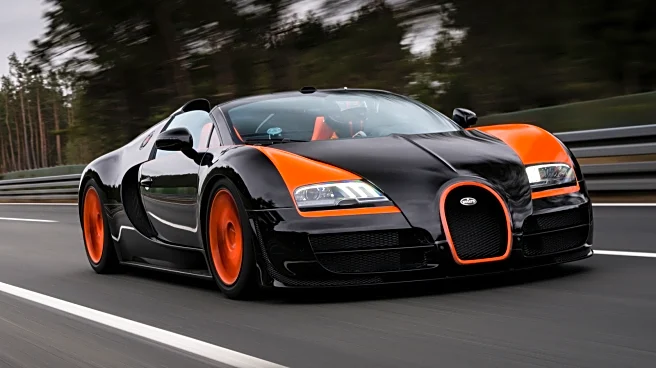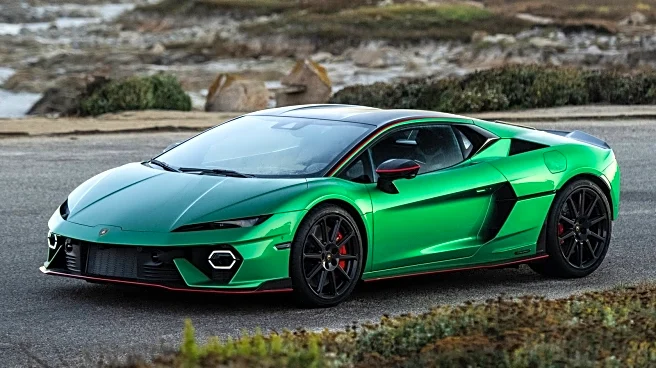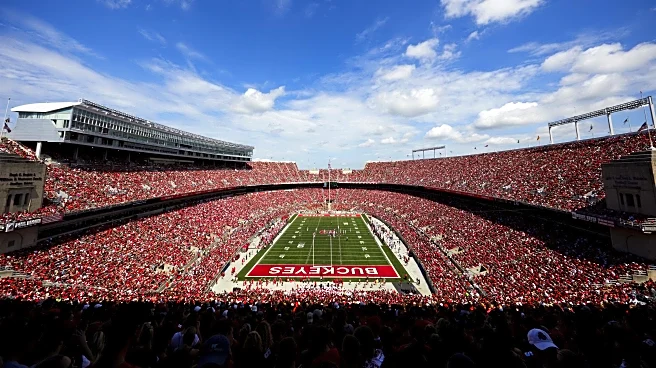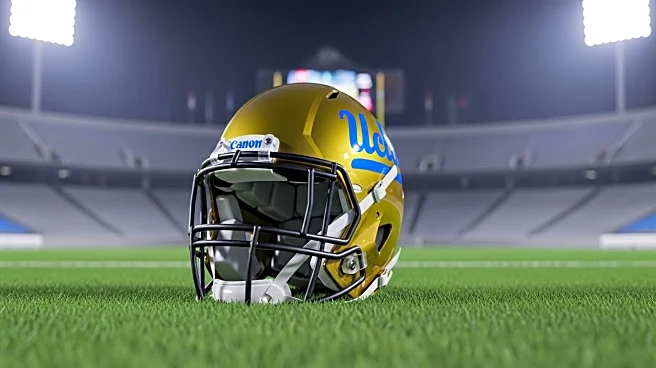
Obviously, the bigger the number the better, and that goes for engines. As enthusiasts we love huge engines, whether they be huge in size or huge in power (or both), and one of the most obvious ways to measure that metric is by looking at cylinder count. V8s are great, V10s are even better, and a V12? Well, those are just incredible. An engine doesn't have to use a V configuration to be cool, either — we love inline-8s, flat-twelves and W12s.
But throughout history there have been a handful of cars
with cylinder counts that almost defy belief. Today we're talking about sixteen-cylinder engines and all of the cars that have used them, both past and present. As you can imagine, engines with sixteen cylinders are typically huge and complicated, and the cars they're found in have been exclusive and expensive, all either high-end luxury machines or extreme supercars.
For this roundup of sixteen-cylinder engines we're focusing strictly on production cars that were actually sold to the public, as there have been too many one-off prototypes and race cars with sixteen-cylinder engines for this list to stay brief. Also, we've organized this list by make, and kept it in alphabetical order. Without further ado, these are all of the production cars that have used sixteen-cylinder engines.
Read more: These Are The Car-Related Movie Mistakes That Really Bother You
Bugatti

Bugatti is the only company that currently produces a sixteen-cylinder engine, the extraordinary quad-turbocharged 8.0-liter W16 that was first introduced in the Veyron two decades ago. Overengineered to the point of absurdity, the W16 is like two narrow-angle V8s stuck together, with four valves per cylinder but only two overhead camshafts per cylinder bank. In the original Veyron the W16 put out 987 horsepower and 922 pound-feet of torque, but subsequent models brought that up to 1,183 hp and 1,106 lb-ft, sent to all four wheels through a seven-speed dual-clutch automatic. The W16 was one of the main reasons the Veyron was able to achieve a record-breaking top speed of 253 mph, and it sounded unlike any other engine (and still does).
The Veyron's replacement, the Chiron, kept the W16 but boosted output to 1,479 hp and 1,180 lb-ft in standard form. Then there was the Chiron Super Sport, which became the first road car to hit 300 mph thanks to improved aerodynamics and 1,578 hp. Other limited-run Chiron-based Bugattis like the Centodieci, Divo and Mistral have also used that same iteration of the W16, as does the track-only Bolide.
For the new Tourbillon, which will serve as the Chiron's replacement when it goes on sale next year, Bugatti has come up with a totally new sixteen-cylinder engine. The Tourbillon uses a naturally aspirated 8.3-liter V16 that was developed with the help of Cosworth and makes 1,000 horsepower and 664 lb-ft of torque on its own, and it'll rev to 9,000 rpm. That obviously wasn't enough, so the Tourbillon also has a 24.8-kWh battery pack and three electric motors (two on the front axle and one at the rear) for a total of 1,800 hp. It'll even have an electric-only range of 37 miles! Now that's progress.
Cadillac

The aptly named Cadillac V-16 was the first production car to use a sixteen-cylinder engine when it debuted in January 1930. Developed in secret to compete with the V12 that Packard already offered, the 7.4-liter V16 was basically two Buick inline-8 engines stuck together, with each bank operating separately from each other. The engine had a narrow 45-degree angle, a counterweighted crankshaft, overhead valves (a Cadillac first) and hydraulic valve adjustment (an industry first). In the early V-16 452 models (named for the 452-cubic-inch displacement) the engine made 165 horsepower, which was increased for later variants. Despite the V-16's massive size and weight, they had top speeds of over 80 mph, and the engine was praised for its unbelievably smooth and quiet operation.
Though the V-16 was an initial success with 2,500 being sold in the first year, as you can imagine given the onset of the Great Depression, it didn't remain that way for long. Every car was custom-built and extremely expensive, and sales sharply fell by the end of 1930. By the middle of the decade Cadillac was only selling around 50 V-16s a year, and the model was discontinued in 1937 after about 4,000 had been built.
But that wasn't the end of the Cadillac V16. In 1938 the brand debuted the Series 90, which used a new 7.1-liter version of the V16 engine with a much wider 135-degree angle. While not quite as extravagant as the earlier cars the Series 90 was still giant and expensive as hell, and fewer than 1,000 were sold over its three-year run. In 2003 Cadillac released the phenomenal Sixteen concept, but it never came to fruition.
Cizeta

In one of the greatest link-ups in history, former Lamborghini engineer Claudio Zampolli teamed up with legendary music producer Giorgio Moroder to create a new supercar designed by Marcello Gandini. The Cizeta-Moroder V16T was launched in 1988, though only the first of the 11 cars built would wear Moroder's name as he withdrew his involvement in 1990.
Unlike most other mid-engine supercars, the Cizeta's 6.0-liter V16 was mounted transversally, part of the reason why the car was so dang wide. The engine was essentially two Lamborghini Urraco V8s mated together, with two crankshafts, two Bosch K-Jetronic fuel injection systems, two overhead cams per cylinder bank, and 64 valves. But the engine shared one aluminum block, and the gearing for the five-speed manual transmission was found in the center of the cylinder banks. Output was 540 horsepower and 400 pound-feet of torque, and it had an 8,500-rpm redline. In a period review, Car and Driver described the engine as "growling menacingly," and praised its low-end torque. And with styling like that and quad pop-up headlights, how could you not love it?
Marmon

You'd be forgiven for never having heard of the Marmon Motor Car Company before, as the Indiana-based automaker was founded in 1902 and went under in 1933 (though the Marmon name continued as a truckmaker). While Marmon made a few different models, including the Model 32 that won the first Indianapolis 500 in 1911, we're here to talk about the Marmon Sixteen. Work on Marmon's V16 engine began in 1926, before Cadillac had started work on its V16, but the Marmon wasn't ready for production until 1931.
Marmon's 8.0-liter V16 used an all-aluminum design that made it much lighter than comparable engines, though it did have steel cylinder liners. Like the Cadillac engine, the Marmon V16's had a 45-degree V-angle. Thanks to an output of 200 horsepower, Marmon Sixteens were able to reach speeds of over 100 mph, and though they were smaller and less imposing than the Cadillacs, the Marmons were still quite big and had handsome designs. Fewer than 400 Marmon Sixteens were produced, and less than a quarter are thought to still exist today.
Want more like this? Join the Jalopnik newsletter to get the latest auto news sent straight to your inbox...
Read the original article on Jalopnik.















